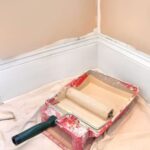Can you get a home improvement loan after buying? Home improvement loans are a valuable financial tool for homeowners looking to renovate or upgrade their properties. However, the process of securing one can be complex, especially for those who have recently purchased a home. Understanding the options available and the eligibility requirements is crucial for making informed decisions about financing home improvement projects.
When it comes to making improvements to your new home, having access to funds is key. This article will explore the concept of home improvement loans and provide insights into whether you can still get one after buying a home. We’ll discuss the different types of home improvement loans, the challenges of obtaining one after purchasing a home, specific criteria that lenders may look for, and alternative funding options for homeowners.
Additionally, we’ll offer practical tips for increasing your chances of getting approved for a home improvement loan and share real-life case studies to illustrate successful outcomes. Whether you’re considering remodeling your newly acquired property or simply want to make some upgrades, understanding your financing options is essential.
Understanding Home Improvement Loans
When it comes to financing home improvement projects, there are several types of loans available for homeowners to consider. Each type of loan has its own eligibility requirements and terms, so it’s essential to understand the options before deciding on the best course of action.
Types of Home Improvement Loans
One common option is a personal loan, which is unsecured and typically requires a good credit score for approval. These loans are flexible and can be used for a variety of purposes, including home improvements.
Another popular choice is a home equity loan, which allows homeowners to borrow against the equity they have built in their home. This type of loan often has a fixed interest rate and predictable monthly payments, making it an attractive option for many borrowers.
A third option is cash-out refinancing, which involves replacing your existing mortgage with a new one that is larger than the current loan balance. The difference is paid out to the homeowner in cash, which can then be used for home improvements.
Eligibility Requirements
The eligibility requirements for each type of home improvement loan can vary significantly. Personal loans often require a good credit score and stable income, while home equity loans may require at least 15-20% equity in the home. Cash-out refinancing typically requires a certain amount of equity as well as meeting other financial qualifications such as debt-to-income ratio.
It’s important for homeowners to carefully review the eligibility requirements for each type of loan before applying. By understanding these requirements upfront, prospective borrowers can better position themselves to qualify for financing their desired home improvement projects after purchasing a new home.
The Process of Buying a Home
When purchasing a new home, buyers often deplete their savings or allocate their funds toward the down payment, closing costs, and initial renovations. This can impact their ability to qualify for a traditional home improvement loan. Additionally, the new mortgage and associated debt may affect their overall financial profile and perceived creditworthiness by lenders.
To further complicate matters, lenders typically prefer to see a stable financial history before approving a home improvement loan. Individuals who have just purchased a home may not have had sufficient time to establish this stability, making it more challenging to meet the eligibility requirements for certain types of loans.
Here are some key points related to the implications of buying a home and the challenges it may present for obtaining a home improvement loan:
- Depleted savings after buying a home
- Increased debt from new mortgage
- Limited financial history for stability
- Perceived lower creditworthiness by lenders
Requirements for Getting a Home Improvement Loan After Buying
After recently purchasing a home, many homeowners may find themselves in need of additional funds to cover the costs of home improvements. However, obtaining a home improvement loan after buying a home can be more challenging than applying for one before making the purchase.
Lenders have specific criteria and financial considerations that they look for in applicants who have recently purchased a home. It is important to understand these requirements in order to increase the chances of securing funding for your home improvement projects.
Financial Stability
Lenders will closely examine the financial stability of homeowners who have recently purchased a property. This includes factors such as credit score, debt-to-income ratio, and employment history. A good credit score is essential when applying for a home improvement loan, as it demonstrates the borrower’s ability to manage their finances responsibly. Lenders may also want to see steady employment and income stability to ensure that borrowers are capable of repaying the loan on time.
Equity in the Home
Another crucial consideration for obtaining a home improvement loan after buying is the amount of equity that homeowners have built in their new property. Home equity is the difference between the current market value of the property and the outstanding mortgage balance. The more equity you have, the more likely you are to qualify for a larger loan amount with more favorable terms. Lenders view equity as a form of security, reducing their risk when extending funds for home improvements.
Documentation and Proof of Purchase
Applicants seeking a home improvement loan after buying will need to provide documentation relating to their recent home purchase. This includes proof of ownership, such as a copy of the closing statement or deed, as well as any relevant paperwork from your mortgage lender.
In addition, lenders may request documentation showing how you intend to use the funds for home improvements, such as contractor estimates or project plans. Being prepared with accurate and thorough documentation can help streamline the application process and improve your chances of approval.
Understanding these specific criteria and financial considerations can help prospective borrowers prepare when seeking a home improvement loan after buying a new property. By ensuring financial stability, building equity in the home, and having all necessary documentation in order, homeowners can increase their likelihood of securing funding for their desired home improvement projects.
Options for Homeowners
After purchasing a home, homeowners may find that obtaining a traditional home improvement loan is more challenging due to the recent financial commitment of buying a property. However, there are other viable options available for securing funding for home improvement projects.
One alternative option is a personal loan, which can provide quick access to funds without using the home as collateral. Personal loans may have higher interest rates compared to home equity loans or refinancing but can be a good option for those who need immediate funds for smaller projects.
Another alternative option is the use of home equity loans, which allow homeowners to borrow against the equity in their property. Home equity loans typically offer lower interest rates compared to personal loans and can provide higher loan amounts depending on the available equity. This type of loan allows homeowners to tap into the value they have built in their homes and utilize it for necessary improvements or renovations.
Cash-out refinancing is also an alternative option for securing funding after buying a home. This method involves refinancing the existing mortgage with a new one that has a higher balance, allowing homeowners to take out the difference in cash. While this may result in higher monthly mortgage payments and potential closing costs, it can be an attractive option for leveraging the increased value of the property towards important home improvements.
| Loan Option | Description |
|---|---|
| Personal Loan | Quick access to funds without using home as collateral; higher interest rates. |
| Home Equity Loan | Borrow against the equity in your property; lower interest rates; higher loan amounts. |
| Cash-Out Refinancing | Refinance mortgage with new one with higher balance; take out difference in cash; potentially higher monthly mortgage payments and closing costs. |
Tips for Securing a Home Improvement Loan After Buying
After purchasing a home, many homeowners may be eager to start making improvements and renovations. However, obtaining a home improvement loan after buying can present certain challenges. Lenders typically have specific requirements and financial considerations that they look for in applicants who have recently purchased a home.
One of the key requirements that lenders may look for is a good credit score. A strong credit history and high credit score demonstrate your ability to manage debt responsibly, which is important to lenders when considering you for a home improvement loan.
Additionally, lenders will also consider your debt-to-income ratio, which is the proportion of your monthly income that goes toward paying off debts. A lower debt-to-income ratio indicates to lenders that you have more disposable income to put towards repaying a home improvement loan.
Another important consideration for getting a home improvement loan after buying is the equity in your home. Equity is the value of your property minus the outstanding balance on any mortgages or loans secured by the property. The more equity you have in your home, the more likely you are to qualify for a larger loan amount at favorable terms.
In addition to these financial considerations, lenders will also assess your employment history and stability. A steady job with consistent income can strengthen your application for a home improvement loan. It’s important to demonstrate to lenders that you have the means to repay the loan and that you are financially responsible. By meeting these requirements and demonstrating financial stability, homeowners can increase their chances of securing a home improvement loan after buying.
| Requirement | Consideration |
|---|---|
| Credit Score | Good credit history and high credit score |
| Debt-to-Income Ratio | Lower ratio signifies more disposable income |
| Equity in Home | The higher the equity, the better chances of qualifying for favorable terms |
| Employment Stability | Demonstrate steady job with consistent income |
Case Studies
Here are some real-life examples of homeowners who successfully obtained home improvement loans after buying and how they navigated the process:
1. Jane and Tom Smith: After purchasing their first home, Jane and Tom were eager to make some renovations to the kitchen and bathrooms. They applied for a home improvement loan through their bank, providing detailed plans of the upgrades they planned to make.
Despite being new homeowners, they were approved for the loan based on their strong credit history and stable income. With the funds from the loan, they were able to complete the renovations within a few months.
2. Mark and Sarah Johnson: Mark and Sarah had recently purchased a fixer-upper with dreams of turning it into their dream home. However, they encountered difficulties securing a traditional home improvement loan due to the property’s condition. Undeterred, they explored alternative options such as a personal loan and cash-out refinancing. Ultimately, they found success with a cash-out refinance that allowed them to access the equity in their home to fund the necessary renovations.
3. Michael and Emily Chen: The Chens had just bought a new home when unexpected repairs became necessary shortly after moving in. Worried about covering these unexpected costs, they researched various financing options available to them as new homeowners. They learned about home equity loans and decided to apply for one, leveraging the equity in their property to secure funding for the repairs.
These case studies illustrate that while obtaining a home improvement loan after buying a home can present challenges, there are various paths that homeowners can take to secure funding for their renovation projects. By exploring different financing options and maintaining strong financial profiles, new homeowners can still access the financial resources needed to make improvements to their properties.
Conclusion
In conclusion, obtaining a home improvement loan after buying a home is indeed possible, but it may present certain challenges. It’s important for homeowners to understand the different types of home improvement loans available and their eligibility requirements. Additionally, they need to be aware of the specific criteria and financial considerations that lenders may look for in applicants who have recently purchased a home.
For those who are unable to qualify for a traditional home improvement loan after buying, there are alternative options to consider. Personal loans, home equity loans, or cash-out refinancing are viable alternatives that can provide the necessary funding for home improvement projects. Homeowners should carefully consider these options and weigh the pros and cons before making a decision.
In the end, it is crucial for prospective borrowers to be well-informed and prepared when seeking financing for home improvements after purchasing a home. By following the tips provided in this article and understanding the various options available, homeowners can increase their chances of securing the funding they need while also being able to fully enjoy and enhance their new property.
Frequently Asked Questions
Is It Smart to Take Out a Loan for Home Improvements?
Taking out a loan for home improvements can be a smart decision if you have a solid plan for the renovations and are confident in your ability to repay the loan. It’s important to carefully consider the cost of the loan, interest rates, and your overall financial situation before making this decision.
Also, be sure to explore other potential funding options such as personal savings or home equity loans.
Is a Renovation Loan a Good Idea?
A renovation loan can be a good idea if you have thought through the costs and benefits of the renovation project, and have a clear plan in place for repayment. Renovation loans often offer lower interest rates than credit cards or personal loans, making them an attractive option for financing home improvement projects.
However, it’s crucial to do thorough research on different types of renovation loans and choose one that fits your specific needs and financial situation.
Can I Add to My Mortgage for Home Improvements?
Yes, adding to your mortgage for home improvements is possible through a cash-out refinance or a home equity line of credit (HELOC). This can be an advantageous way to fund renovations because mortgage interest rates are generally lower than other types of loans.
However, it’s important to carefully consider the long-term financial implications of increasing your mortgage debt and ensure that you have a solid plan for repaying the additional amount borrowed. Additionally, consulting with a financial advisor or mortgage professional can provide valuable insight into whether this option is right for you.

I’m thrilled to have you here as a part of the Remodeling Top community. This is where my journey as an architect and remodeling enthusiast intersects with your passion for transforming houses into dream homes.





